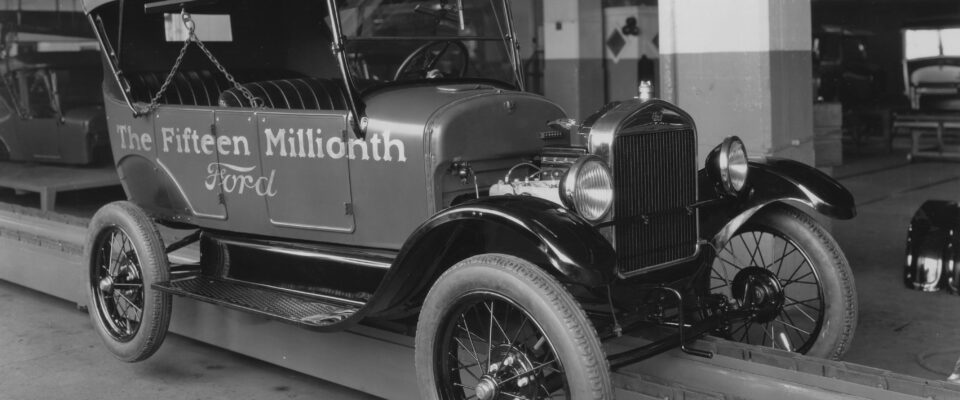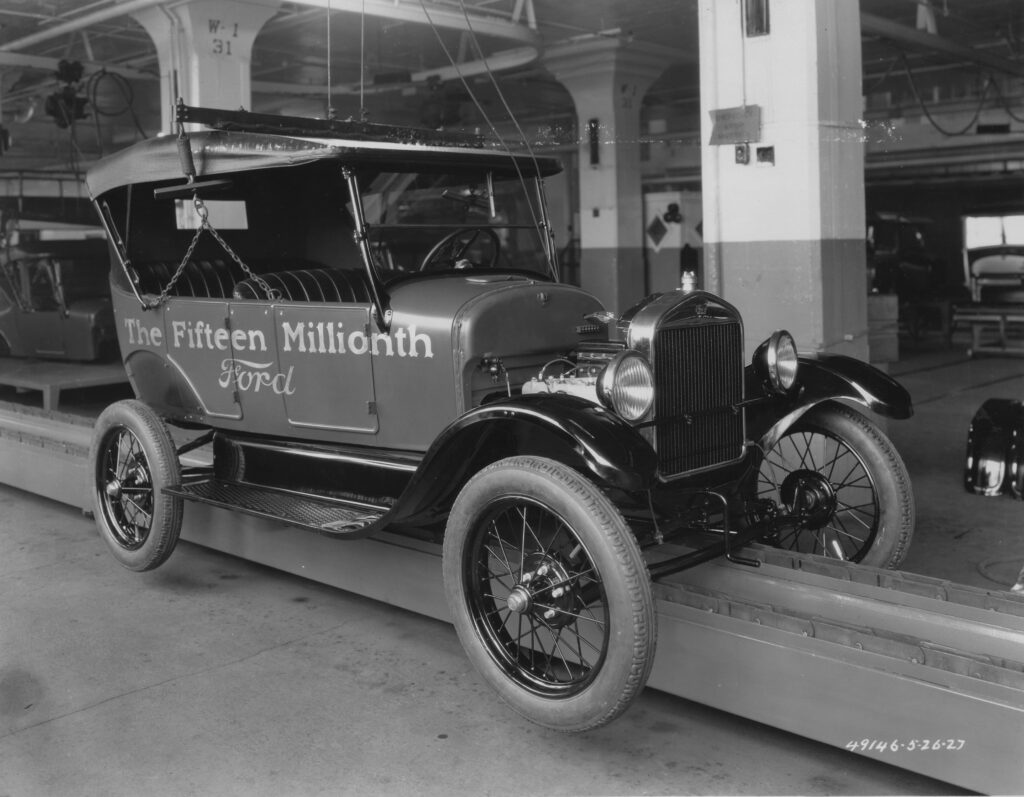
On May 26th, 1927, the fifteen millionth Ford Model T would roll off the assembly line in Highland Park, Michigan. Its production would strike a landmark milestone in the production of the Ford Model T, but also how the average United States citizen would personally transport themselves and go about their day to day lives.
The Model T was far from the first personal automobile to reach the United States. Various auto manufacturers each had a take on what the personal automobile would function and look like, some more successful than others. Oldsmobile would be the first to find success with a gasoline powered automobile in the early 1900s. Henry Ford went into the automotive market with a similar “runabout” to his competitors, but he needed to do something different. Henry Ford would then come up with the Model N. The Model N was lighter and cheaper than the other vehicles out on the market, and would be developed into the Model R and Model S, which were more expensive versions of the N. Selling for a price of $500 in 1906, which is roughly $16,000 in today’s USD, the Model N would propel the Ford Motor Company into one of the leading auto manufacturers at the time. Ford was not completely happy with the Model N however, as it could only hold two people. Ford envisioned a lightweight, full sized car that could be sold to the masses. In 1908, the first Ford Model T would be shown to the public at a price of $850, which was substantially less than what the nearest competitor, the Thomas Flyer, which offered more power but cost $3,500. The Model T offered many features from all different kinds of cars at the time, a high suspension, good amount of power, and could easily hold at least four people. This made the Model T an instant hit, selling enough to capture over ten percent of the entire automobile market by 1909. The Model T also was able to capture the attention of people who had not switched to automobiles yet from horses, who were not happy with how cars were not able to replace the utility of a horse. The suspension, power, and room of the Model T was enough to get their interest.
As Model T production went on, Ford began to take steps to make it quicker and cheaper to keep up with the demand of the orders. In 1923, sales of the Model T would peak, with over a million cars being sold just that year alone. The crashing price of the car helped as well, as Ford’s revolutionary assembly line production allowed them to make as quick as once every 93 minutes, down from the average thirteen hours it took at the start to make a Model T. With the shorter production times, the cost of production crashed, and with that, the consumer price dropped substantially, to a measly $260 in 1923. Ford wanted the car to be so cheap that anyone on any sort of salary could be able to afford one.
On May 26th, 1927, the fifteen millionth Ford Model T would roll off the assembly line in Highland Park, Michigan to much fanfare outside the factory. The car itself was painted with the words “Fifteen Millionth Ford” in silver letters, each stamped on by 8 notable employees in the company. The car itself was driven off the assembly line by Edsel Ford, with Henry Ford in the passenger seat. Outside the factory it met the first Model T made, alongside Henry Ford’s quadricycle, the first “car” he ever made. The fifteen millionth car would also mark the end of Model T production, with 1927 being the final year of production before Ford introduced the Model A, the Model T’s replacement. By the time of the Model T’s production end, it accounted for about half of all cars on the road of the United States at that time.
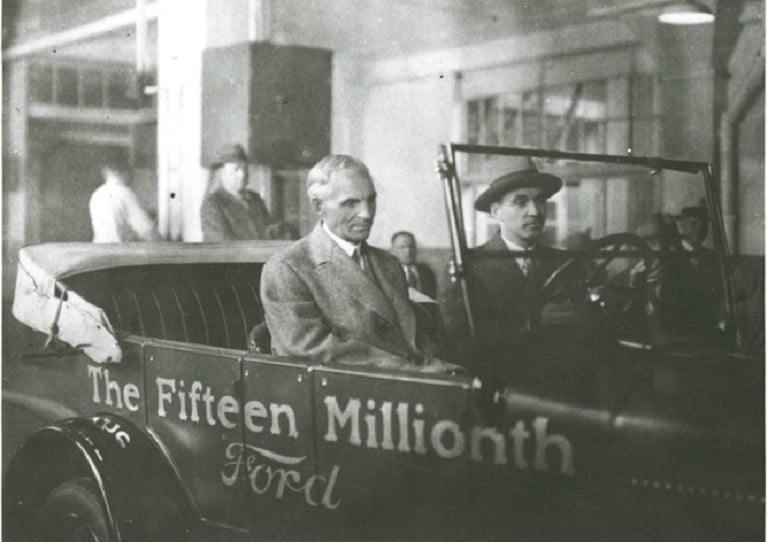

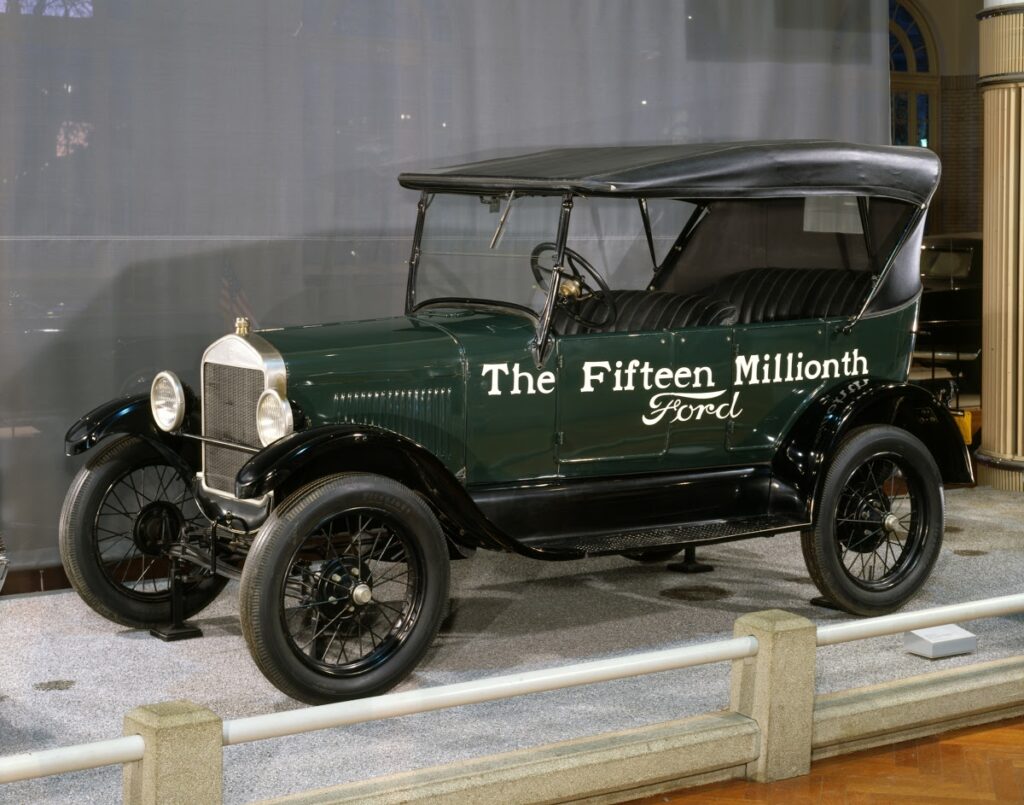
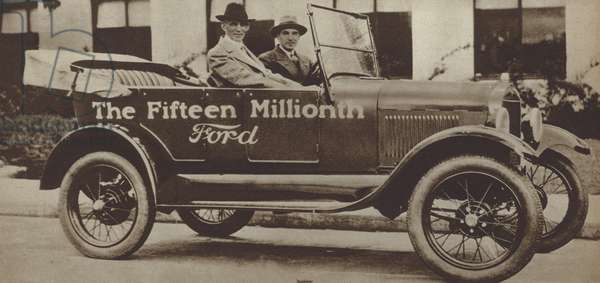
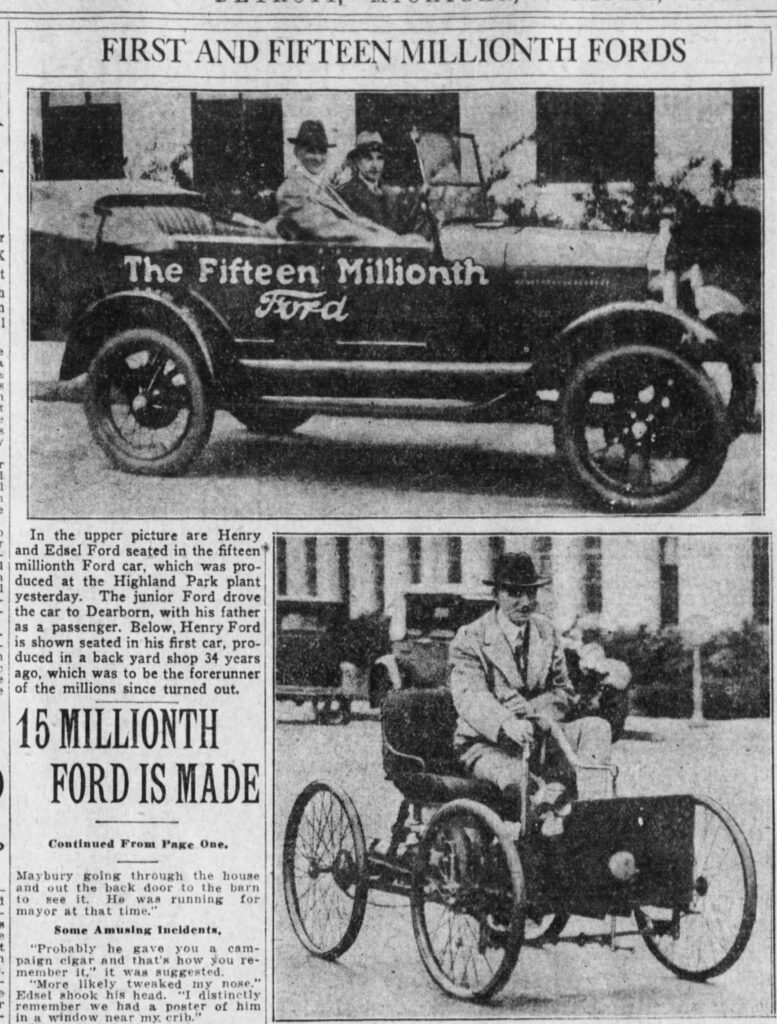
Fun Fact: The leftover wood from the production of the Ford Model T was recycled into charcoal, and sold as Ford Charcoal. When Ford stopped using wood for production, the charcoal branch became its own company, known today as Kingsford Charcoal.
The Ford Model T made a massive impact on the lives of Americans and how we move around in society. Prior to the Model T, personal transport that wasn’t a horse or bicycle was only for the very rich. If you wanted to go far, you took a train. Then the Model T became the most popular car in the United States, it also set the stage for the concept of the personal car to reshape our cities and towns. Prior to this, the roads were generally paved dirt or gravel, and had no clear direction or flow besides rails for streetcars or businesses that lined the streets. Streets, especially the main roads in towns, were social places, they were full of people milling about and conducting their lives. The people that worked in these cities and towns also lived very close to where they worked, since traveling daily long distances on horseback was not easy, and the only other option was a train, which would get expensive over time, or bicycle, which was not easy either on the unpaved surfaces. When the cars started to hit the roads en masse, the infrastructure around them had to change. Roads changed materials and got tougher, smoother, faster. Cars zipping through streets had to stay in dedicated lanes, people could not freely move across streets without the chance of getting run over. Another consequence of the popularity of the car was the rise of the suburbs. Since it was not substantially easier to cover longer distances without the need to follow a train schedule, people began to move farther away from their places of work, where they could have larger horses and properties compared to the apartments in the cities. This would evolve more and more over time to the structures we have now, large cities where people work then surrounding suburbs where they live, with highways to connect them. The Model T and its popularity was the catalyst for the advent of the personal car, and in the process, revolutionized how we go about our lives.
The fifteen millionth Ford Model T is preserved today, part of The Henry Ford Museum collection and is currently displayed at the Greenfield Village in Dearborn, Michigan. You can learn more about it here.

Sources:
“First and Fifteen Millionth Fords.” Detroit Free Press. May 27, 1927.
“The Model T and American Life.” The New Atlantis, no. 22 (2008): 115–115. http://www.jstor.org/stable/43152452.
Wells, Christopher W. “The Road to the Model T: Culture, Road Conditions, and Innovation at the Dawn of the American Motor Age.” Technology and Culture 48, no. 3 (2007): 497–523. http://www.jstor.org/stable/40061274.

Gregory Kruimer is currently enrolled in his senior year at Ramapo College as a History major.

